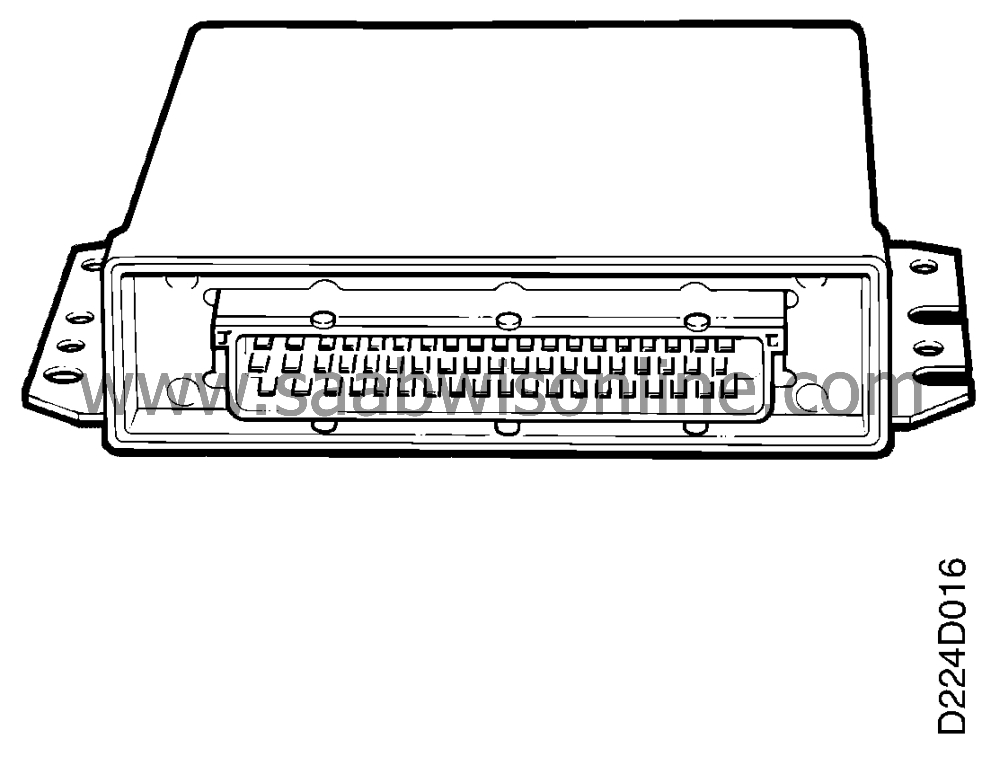Electronic control module
|
|
Electronic control module
|
Electronic control module
Saab Trionic principally controls
|
•
|
ignition (by means of the ignition
discharge module)
|
|
•
|
fuel injection (which is sequential)
|
|
•
|
boost pressure (by means of a solenoid valve)
The Trionic electronic control module has a 70-pole terminal and is located at
the right-hand A-pillar. When the powertrain is removed, the ECM terminal and its wiring are
guided out through the bulkhead partition.
The ECM has a 32-bit processor which can perform 2 million calculations per
second.
A number of sensors supply information to the ECM, which processes these using
matrices which have been stored in the ECM after engine operation has been optimized.
Examples of such important matrices are ignition timing matrices, fuel matrices and boost
pressure matrices.
The ECM is programmed for the B204L and is only to be used for this engine in the
Saab 900.
The ECM may be damaged by electrostatic discharges or shorting of any of the
ECM's outputs, and great care must therefore be taken whenever handling the ECM,
for example in fault diagnosis, e.g. with a BOB.
The electronic control module is continuously supplied with +30 voltage
and loses adapted values and diagnostic trouble codes stored in its memory if this voltage
disappears.
The ECM is adjusted for a voltage between 8 and 16 V during driving.
When the ignition is switched on, the ECM is activated and pre-injection takes place
provided certain conditions are met. The ECM then waits for pulses from the crankshaft
position sensor.

The main measured quantity for fuel injection comes from the manifold absolute
pressure sensor.
There are substitute functions for all sensors apart from the crankshaft position
sensor.
After the ignition has been switched off, all sensors which are supplied with 5 V remain
activated for 15 minutes. During this time it is also possible to carry out scan tool diagnostics.
After 15 minutes, global adaptation of the main fuel matrix takes place and only the memory is
then activated.
Adaptation is important for performance, drivability, fuel consumption and emissions.
The ECM must therefore not be unnecessarily disconnected or in any other way de-energized.
|